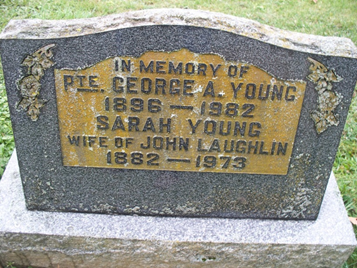1066156 Pte George Alexander Young was born in the Township of Glenelg, Grey County, on 26th August 26th, 1896, to Joseph and Mary Young. The youngest of the couple's seven children, they'd watch as their two youngest sons, Joseph and George, marched off to war. Joseph, who had already left home, enlisted in a western regiment in January of 1916.
A year later, almost to the day, nineteen year old George attested to the 248th Battalion, in Owen Sound, on 4th January, 1917. He was billeted locally until the unit sailed in May of 1917. Upon arrival in England, the 248th Battalion was absorbed into the 8th Reserve Battalion. This unit's mandate was to supply reinforcements to the 58th and 116th battalions as well as the 4th C.M.R.
George was taken on strength of the 4th C.M.R. on 9th November, 1917, in a reinforcement draft after the blood-letting the unit had received during the 3rd Battle of Ypres. A battle more commonly known for where it ended: Passchendaele.

Serving with the 4th C.M.R. through the harsh winter of 1917/18, he was hospitalized with trench fever in June, returning in time to be with the unit during the battles of the final 100 days. Amiens, Arras 1917, Cambrai and the Pursuit to Mons 1918. Coming through it all unscathed he was hospitalized again in December 1918, this time with influenza. Evacuated to England, George was moved to convalescence in January 1919, where he recovered.
1066156, Private George Alexander Young was struck off strength of the Canadian Expeditionary Force in Toronto, on 2nd April 2nd, 1919. Both Young boys made it home. George would return to Grey County, passing away in 1982. He was laid to rest in the Durham Cemetery. His military service during the Great War is remembered locally on Glenelg Township's memorial plaque.
Thanks and credit for the above biography go to George Auer.